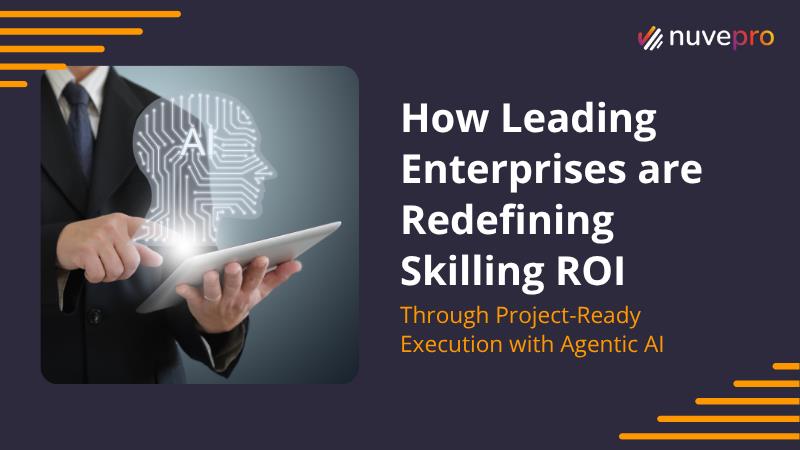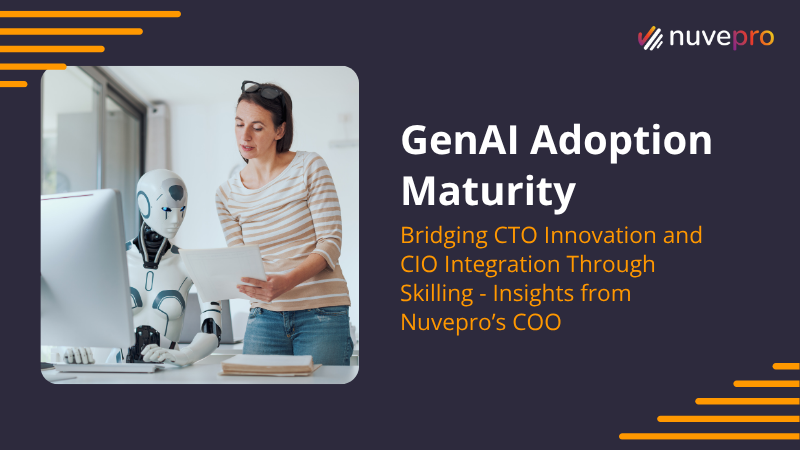Artificial Intelligence (AI) has moved beyond buzz. It’s no longer just about automating repetitive tasks; it’s about creating intelligent, decision-making agents that collaborate with humans to achieve better outcomes. This new paradigm is called Agentic AI—an AI that doesn’t just “do” but can “act,” “decide,” and “learn” in context. The future of work, learning, and business lies not in machines taking over but in humans and AI working together—side by side. In today’s fast-paced digital world, artificial intelligence (AI) is no longer a futuristic concept—it’s an everyday reality. We see AI in the recommendations we receive while shopping online, in the chatbots that answer our queries, and even in the smart assistants that help manage our schedules. But as we stand at the edge of the next major shift in technology, a new kind of AI is emerging: Agentic AI. So, What is Agentic AI? To put it simply, Agentic AI refers to AI systems that don’t just sit passively waiting for instructions. Instead, these AI systems—or AI agents—can actively take decisions, plan actions, and execute tasks autonomously. They are designed to think, learn, and act in ways that resemble human decision-making. Imagine an assistant that doesn’t just provide you with information when you ask but can also suggest the best course of action, take that action, and adapt its approach based on the outcome. This is what Agentic AI brings to the table. How Does Agentic AI Differ from Generative AI? Generative AI, like ChatGPT or DALL·E, creates content—text, images, audio—based on the prompts it receives. While this is incredibly powerful, it is inherently reactive. It needs human direction to function. Agentic AI, on the other hand, is proactive. It doesn’t just create—it understands goals, makes decisions, executes tasks, and learns from the results. Traditional AI vs. GenAI vs. Agentic AI: What’s the Difference? The world of Artificial Intelligence has seen a rapid transformation over the years, moving from simple automation to content generation, and now to intelligent action. To truly understand where Agentic AI fits in this evolution, it’s essential to differentiate it from Traditional AI and Generative AI (GenAI). Traditional AI was built to automate repetitive, well-defined tasks. These systems operate by following pre-programmed rules, making them highly reliable in structured environments. Think of early chatbots, fraud detection models, or robotic process automation (RPA). They work well for what they were designed to do, but they lack adaptability and struggle with handling complex or ambiguous situations. Then came Generative AI (GenAI)—the type of AI that captured global attention. GenAI models like ChatGPT or Midjourney are trained on vast amounts of data to generate creative outputs—be it text, images, music, or even code. These systems are excellent at mimicking human creativity and providing interactive, human-like responses. However, they remain reactive—they can only respond based on the prompts they receive. They don’t pursue goals or make independent decisions. Now we’re entering the age of Agentic AI—a transformative leap where AI is not just generating content but actively working toward achieving specific outcomes. Agentic AI is capable of decision-making, adapting to different environments, and learning from the results of its actions. Unlike GenAI, which waits for a prompt, Agentic AI can take the initiative, set priorities, and collaborate deeply with humans to meet business objectives. For instance, AI agents are already being used in customer support, healthcare diagnostics, and adaptive learning platforms—helping businesses not just save time but actually drive measurable outcomes. The key difference lies in how these systems operate: Traditional AI is rule-based, GenAI is creative and predictive, and Agentic AI is autonomous and outcome-driven. While traditional systems help with repetitive tasks and GenAI assists with content creation, Agentic AI focuses on taking actions that move the needle—whether it’s improving customer satisfaction, reducing operational costs, or accelerating workforce readiness. Ultimately, Agentic AI doesn’t aim to replace human potential; it aims to amplify it. It’s where autonomy, intelligence, and human partnership come together to create value in ways we’ve never seen before. Why is Agentic AI Gaining Traction? Agentic AI is rapidly gaining traction because today’s business environment has become far too complex, fast-paced, and data-driven for traditional systems to keep up. Organizations are facing massive amounts of data, shorter decision-making windows, and mounting pressure to innovate and stay ahead of the competition. Relying solely on manual processes, static automation, or even conventional AI models is no longer enough. This is where Agentic AI comes in. By bringing autonomy, intelligence, and adaptability together, Agentic AI helps businesses make quicker, smarter decisions while significantly reducing the risk of human error. It enhances efficiency, boosts productivity, and enables organizations to respond to market shifts in real time—something that’s becoming essential in today’s volatile economy. Industries such as finance, healthcare, manufacturing, and retail are already seeing the impact. From automating complex workflows to delivering personalized experiences and optimizing operations, Agentic AI is not just a buzzword—it’s becoming a strategic necessity for businesses that want to stay competitive, resilient, and future-ready. Agentic AI helps businesses: The Inner Workings of Agentic AI: While the technical side of AI can sound complicated, the way AI agents actually work is pretty easy to understand when we break it down into simple steps. Think of an AI agent as a super-efficient virtual employee that not only gets things done but also learns and improves over time. Here’s how it works: Perception: First, the AI gathers information from different sources. This could be anything—text, images, voice commands, or real-time business data. It’s like the AI “listening” or “observing” what’s going on. Thinking: Next, it processes this information using pre-trained models, built-in logic, or sometimes even symbolic reasoning. This is where the AI analyzes what it has seen or heard and makes sense of it. Planning: Once it understands the situation, the AI figures out the best possible action to take. It’s like drawing up a quick plan of what needs to happen next. Execution: With the plan ready, the AI takes action. This could be something as



